Gladiolus: Care Guide for Flower
Gladiolus, often referred to as the “sword lily,” is renowned for its striking tall spikes adorned with numerous vibrant flowers. These blooms stand out in garden beds and are a favorite in cut flower arrangements due to their elegance and vivid colors. Gladiolus plants produce long, slender stems that can reach heights of 3 to 4 feet, making them ideal for adding vertical interest to a garden. Their trumpet-shaped flowers come in an impressive range of colors, from bold reds and oranges to soft pinks and purples. They bloom in succession, ensuring an extended period of beauty in your garden or vase. Gladiolus are not only aesthetically pleasing but also relatively easy to grow, making them a popular choice for both beginner and experienced gardeners. Whether you’re seeking a dramatic focal point in your garden or looking to add a splash of color to your floral arrangements, gladiolus offers both beauty and versatility. Their low maintenance requirements and ability to thrive in various climates contribute to their widespread popularity among gardeners and flower enthusiasts alike. Our gardening blog is a perfect place to find all the information you need!
Why Choose Gladiolus for Your Garden or Home?
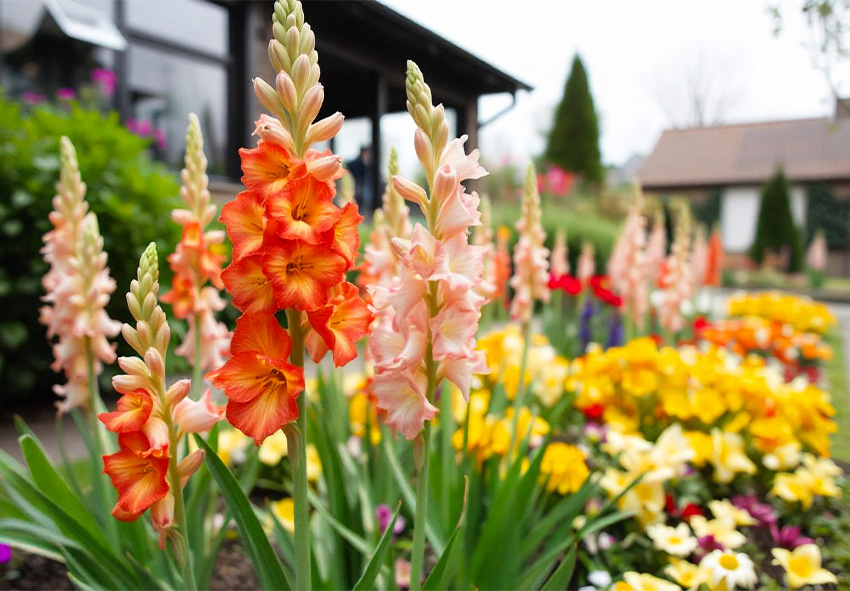
Gladiolus, members of the Iridaceae family, are a fantastic addition to any garden or home, offering an array of benefits that make them a favorite among gardeners and floral enthusiasts. One of the most compelling reasons to choose gladiolus is their long-lasting blooms. Gladiolus flowers bloom on tall spikes, with the lower flowers opening first and the upper ones following, which allows for an extended flowering period. This unique blooming pattern ensures that your gladiolus will continue to provide beauty in your garden or home for weeks, making them a rewarding plant for gardeners.
In addition to their beauty, gladiolus are relatively easy to cultivate. These bulbs are straightforward to plant and care for, requiring only well-draining soil and plenty of sunlight. Gladiolus are also quite versatile, thriving in both garden beds and containers, which makes them suitable for various gardening setups. Their stunning color range is another reason to choose gladiolus for your space. From vivid hues like red, yellow, and orange to soft pastels like pink and white, gladiolus offer a diverse palette that can complement any garden design or floral arrangement. Their vertical growth habit also adds structure to garden beds, providing a dramatic effect. With minimal care required, gladiolus are a beautiful and hassle-free option for any garden or floral display.
The Most Popular Gladiolus Varieties and Their Characteristics
Gladiolus come in many varieties, each offering unique colors, bloom sizes, and characteristics to enhance any garden or floral arrangement. One of the most popular varieties is the “White Prosperity” gladiolus, known for its elegant white blooms with soft lavender edges. These tall, slender flowers are a great choice for adding sophistication to any garden bed or for use in elegant bouquets. Another well-known variety is “Green Star,” which boasts striking green and white flowers with a subtle, delicate fragrance. This variety is often chosen for its unusual color, adding a touch of the exotic to gardens and floral displays.
For those who love bold colors, the “Red Beauty” gladiolus is a vibrant option. With its rich red flowers, this variety creates a stunning focal point in garden beds and works beautifully in red-themed floral arrangements. The “Priscilla” variety offers large, soft pink blooms that are perfect for adding a romantic touch to any space. Gladiolus varieties like “Lily Flowered” are prized for their unique petal shape, resembling lilies with wide, pointed petals that create a dramatic effect in floral arrangements.
Whether you’re seeking traditional or more unique colors, gladiolus provides a broad selection of varieties to suit any gardening style or floral need.
Classic Tall Gladiolus Varieties
Classic tall gladiolus varieties are a staple in many gardens for their impressive height and beautiful, dramatic flowers. These tall gladiolus varieties create a striking focal point in any landscape, standing out with their vibrant blooms. Here are some popular options that are perfect for garden beds or cut flower arrangements:
- ‘Gladiolus Ellis‘: Known for its bold red flowers that make a strong statement in any garden, this variety is perfect for adding a pop of color.
- ‘Gladiolus White Prosperity’: This elegant white variety features soft lavender accents, making it an ideal choice for more sophisticated garden designs.
- ‘Gladiolus Princess Lee‘: With soft peach-colored blooms, this variety adds a subtle and warm touch to your garden.
These tall gladiolus varieties grow up to 4 feet in height, making them perfect for background planting, along fences, or as a dramatic centerpiece. They also work wonderfully in floral arrangements, bringing lasting beauty to indoor spaces. With their tall spikes and stunning blooms, these gladiolus varieties are perfect for creating a striking visual impact.
Dwarf and Compact Gladiolus for Small Gardens
Dwarf and compact gladiolus varieties are a great choice for smaller spaces, allowing gardeners to enjoy the beauty of gladiolus without taking up too much room. These varieties are ideal for container gardens, borders, or any small garden setting. Consider these popular options:
- ‘Nanus Gladiolus‘: This compact variety reaches only 18 to 24 inches in height and is known for its vibrant blooms, making it perfect for small garden beds or containers.
- ‘Gladiolus Cappuccino (Tiramisu)‘: With its delicate, coffee-inspired tones, this variety stays compact, typically reaching just 18 inches tall, and adds a unique touch to your garden.
- ‘Mini Gladiolus’: Known for its miniature flowers, this variety is a charming addition to small spaces and containers.
These smaller gladiolus varieties allow gardeners to enjoy vibrant, colorful blooms without sacrificing precious space. They can be planted in clusters for a fuller effect or placed in containers for a charming focal point. With their smaller size, these compact gladiolus varieties are ideal for tight spaces but still deliver a big impact in color and beauty.
Exotic and Multi-Colored Gladiolus
For those looking to add something unique and vibrant to their gardens, exotic and multi-colored gladiolus varieties provide a striking option. These varieties stand out due to their bold color combinations and unusual patterns. Here are a few varieties worth considering:
- ‘Green Star‘: Known for its exotic, green-and-white blooms, this gladiolus adds an unexpected and eye-catching touch to any garden.
- ‘Priscilla‘: This variety features soft pink blooms with a gradient effect that adds an elegant, multi-toned look to your garden.
- ‘Bicolor Gladiolus’: With stunning bi-color blooms, this variety combines two contrasting colors, creating a dramatic visual impact in the garden.
These exotic gladiolus varieties bring a unique flair to any garden with their bold colors and patterns. Whether you’re designing a colorful garden display or using them for cutting flowers, these varieties are perfect for adding an exotic and vibrant touch to your landscape. Their striking color combinations are sure to be the center of attention.
Fragrant Gladiolus for a Scented Garden
If you’re looking to add fragrance to your garden, fragrant gladiolus varieties are a perfect choice. These varieties combine beautiful blooms with delightful scents, creating a sensory experience in addition to their visual appeal. Consider these fragrant gladiolus varieties for your garden:
- ‘Aroma Delight’: Known for its sweet fragrance, this variety features soft pink blooms that provide a gentle, pleasant scent.
- ‘Gladiolus callianthus Murielae‘: This gladiolus variety has aromatic blooms with a sweet fragrance that enhances the sensory experience of your garden.
- ‘Perfumed Gladiolus’: This variety offers a strong, floral scent that makes it a perfect choice for adding fragrance to your garden beds or containers.
Planting fragrant gladiolus near patios, walkways, or seating areas ensures that their delightful scent can be enjoyed throughout the day. These varieties are perfect for creating a scented garden that’s not only visually stunning but also aromatic, making your outdoor space even more inviting. Adding fragrant gladiolus will elevate your garden’s atmosphere with both color and scent.
How to Plant and Grow Gladiolus Successfully
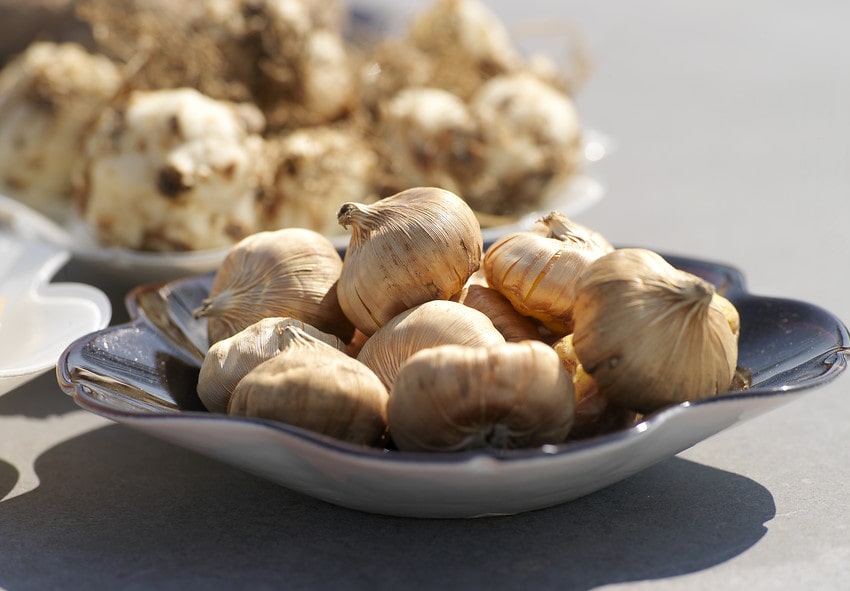
Growing gladiolus can be a rewarding experience, as these vibrant flowers add a bold touch to any garden. However, to ensure they thrive, you need to follow proper planting and care techniques. Gladiolus plants grow from corms, which are essentially swollen stems that store nutrients. To get the best blooms, it’s essential to select the right corms, plant them at the right depth, and give them the proper care and growing conditions.
A step-by-step approach to planting gladiolus starts with choosing healthy corms, selecting the right location with well-draining soil, and planting at the correct depth for robust root growth. After planting, watering, and providing proper sunlight will ensure healthy plants. Additionally, caring for gladiolus includes protecting the plants from frost and strong winds and providing a nutrient-rich environment for optimal blooming.
By following these key steps, your gladiolus plants will thrive, and you can enjoy their stunning, tall blooms throughout the growing season. With proper attention to detail, gladiolus can become a beautiful feature in your garden.
Step-by-Step Guide to Planting Gladiolus
Planting gladiolus involves choosing the right corms, soil, and location. Select large, firm corms and ensure they’re placed in well-drained, sunny spots. Plant corms at the right depth, water thoroughly, and maintain good growing conditions to ensure strong roots, healthy foliage, and beautiful blooms.
Step 1: Choosing Quality Gladiolus Corms
Choosing quality gladiolus corms is the first step toward a successful planting. When selecting corms, look for ones that are large and firm to the touch. Avoid any corms that appear shriveled, soft, or have visible mold. These are likely signs of poor health and may not produce strong blooms. Larger corms tend to yield more flowers, and they are generally more robust.
It’s essential to choose corms with no damage, such as cuts or soft spots, as these can affect the growth potential of the plant. Smaller corms might still grow but may not flower as impressively or may take longer to develop. Inspect the corms thoroughly before purchasing to ensure you’re planting the healthiest ones available. Healthy corms are the foundation for vibrant gladiolus blooms, so investing in quality corms will pay off with beautiful results.
Step 2: Choosing the Right Soil and Location
For gladiolus to thrive, it’s important to plant them in the right soil and location. Gladiolus requires well-draining soil, preferably sandy loam with a pH level between 6.0 and 7.0. Soil that retains too much moisture can lead to root rot, so be sure to check the soil’s drainage properties before planting. If the soil is clay-heavy or poorly drained, consider amending it with compost or coarse sand to improve drainage.
Location is also key for optimal flowering. Gladiolus needs full sun for at least 6 hours a day to produce strong blooms. Choose a spot that gets plenty of sunlight throughout the day, as this will help the corms develop strong roots and flowers. Additionally, make sure the area is not shaded by trees or taller plants. Proper soil and sunlight will ensure healthy growth, making your gladiolus a stunning feature in your garden.
Step 3: Proper Planting Depth and Spacing
Proper planting depth and spacing are essential for encouraging strong root development and healthy gladiolus growth. Plant gladiolus corms 4-6 inches deep in the soil. This depth helps to protect the corm from temperature fluctuations while allowing the roots to establish firmly. If the soil is loose and well-draining, planting slightly deeper may be fine, but avoid planting too deep as it could hinder growth.
Space the corms 6-8 inches apart to allow adequate air circulation between the plants. Proper spacing helps prevent overcrowding, which can lead to competition for nutrients and poor airflow, increasing the risk of disease. If you’re planting several rows, space them about 12 inches apart. This allows the plants to grow tall without affecting each other’s growth. Proper depth and spacing are key factors for gladiolus to grow strong, healthy stalks that support the large, showy blooms that make them so popular.
Step 4: Watering After Planting
Watering your gladiolus correctly after planting is vital for ensuring strong root development. After planting the corms, water the soil thoroughly to help the roots establish themselves. Be sure to water deeply, ensuring that the moisture reaches the root zone. However, be cautious not to overwater, as gladiolus corms are susceptible to rot in waterlogged conditions.
For the first few weeks, keep the soil evenly moist but not soggy. This will help the corms settle into the soil and begin their root development. Once the plant starts growing, water consistently but avoid saturating the soil. It’s important to allow the soil to dry out between waterings to prevent the roots from sitting in overly wet conditions. Gladiolus prefers slightly dry conditions between watering, as this helps to prevent diseases like root rot. Proper watering practices, combined with good soil drainage, will ensure that your gladiolus plants grow strong and healthy.
Step 5: Providing the Right Growing Conditions
After planting, providing the right growing conditions is essential to ensure that gladiolus thrives. Gladiolus plants are sensitive to frost, so it’s important to protect them from late frosts that could damage the young shoots. Consider using row covers or frost blankets during late spring if there is a risk of unexpected cold weather. Additionally, gladiolus plants can be sensitive to strong winds, so it’s helpful to plant them in an area that offers some protection from gusty conditions, or you can use stakes to support them as they grow tall.
Mulching around your gladiolus is another key factor in their growth. Apply a 2-3 inch layer of mulch around the base of the plants to help retain soil moisture and regulate temperature. This mulch will also help suppress weeds, reducing competition for nutrients. By providing a protective environment, you ensure your gladiolus plants have the best chance for healthy growth and vibrant blooms throughout the season.
Essential Gladiolus Care Tips for Healthy Growth
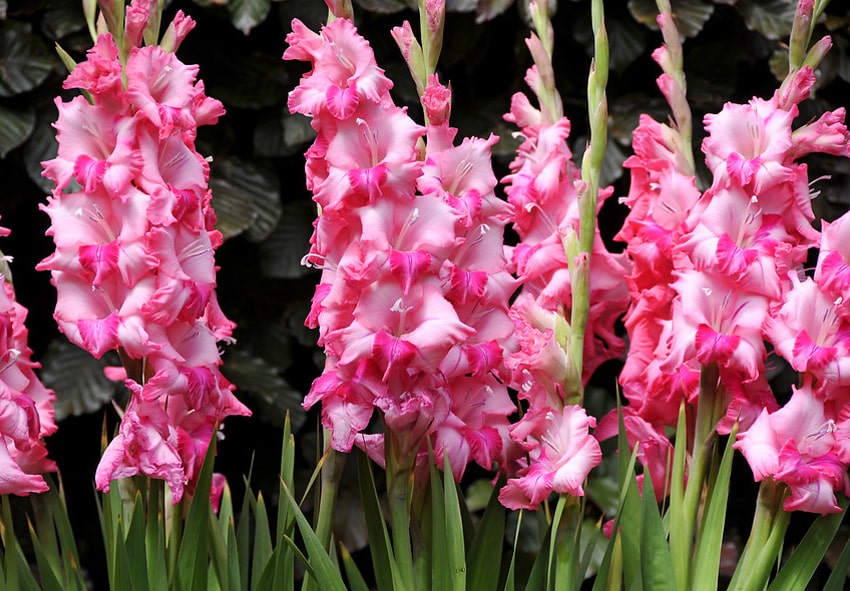
To ensure gladiolus grows strong and produces vibrant blooms, it’s essential to provide them with the right gladiolus bulb care. Gladiolus plants are relatively low-maintenance but thrive with proper light, water, temperature, and feeding. They require full sunlight for at least 6 hours daily to produce their tall, striking flower spikes. Additionally, watering must be consistent, ensuring the soil remains moist without becoming waterlogged.
Fertilization is crucial for promoting healthy growth and large blooms. A low-nitrogen fertilizer is recommended when shoots emerge, followed by regular side dressing with compost or liquid feed throughout the growing season. Gladiolus plants also prefer well-draining soil, so make sure to plant them in a location that doesn’t retain too much moisture.
Temperature is another important factor; gladiolus enjoys warm weather but needs protection from extreme heat and cold snaps. Providing proper light, temperature, and nutrients will ensure your gladiolus grows vigorously and produces beautiful flowers.
By following these care tips and paying attention to water, temperature, light, and feeding needs, you will have a thriving gladiolus plant that brings long-lasting beauty to your garden or floral arrangements.
How to Care for Gladiolus After Planting
It’s important to know how to care for gladiolus in the garden just as learn how to care for gladiolus indoors. Once planted, gladiolus requires consistent care to ensure healthy growth. Proper watering, fertilizing, and providing sufficient sunlight are essential for strong plants. Additionally, protecting them from extreme temperatures and supporting the tall stems will encourage better flowering. Regular attention will help your gladiolus thrive throughout the season.
Step 1: Watering Gladiolus the Right Way
Watering gladiolus correctly is essential for healthy growth and bloom production. Gladiolus plants need consistent moisture, especially when they are actively growing. Water deeply once or twice a week to ensure the soil stays moist, but avoid making it soggy. Overwatering can cause the corms to rot, so make sure the soil has good drainage. If you have clay or heavy soil, consider adding organic matter to improve drainage.
While watering, avoid wetting the leaves, as this can increase the risk of fungal diseases like botrytis and rust. Water the base of the plant directly, soaking the soil to a depth of about 4-6 inches, which encourages deep root growth. If your gladiolus is planted in a spot with good air circulation, the soil will dry out between waterings, which helps prevent rot.
In very hot weather, you may need to water more frequently, but always ensure the soil dries out between waterings. Consistent watering is vital for healthy gladiolus plants that will reward you with tall, beautiful blooms.
Step 2: Fertilizing for Strong Growth
Fertilizing gladiolus plants properly promotes healthy growth and vibrant blooms. When the shoots begin to emerge in early spring, apply a low-nitrogen fertilizer (such as 5-10-10). A low-nitrogen fertilizer encourages strong root development and flower production rather than excessive foliage growth. Make sure to follow the instructions on the fertilizer label for proper application rates.
Throughout the growing season, it’s beneficial to side-dress gladiolus with compost or liquid feed every 3-4 weeks. This will provide a slow release of nutrients, ensuring that the plant receives a steady supply of the essentials for healthy development. Compost helps improve soil structure, water retention, and nutrient availability.
Avoid using high-nitrogen fertilizers, as these can encourage too much leaf growth at the expense of flowers. Proper feeding is key to maintaining robust gladiolus plants, ensuring that they produce tall flower spikes with an abundance of blooms that will last through the growing season.
Step 3: Providing Proper Light and Temperature
Gladiolus thrives in full sunlight, requiring at least 6 hours of direct sunlight daily. Without sufficient sunlight, the plants may become leggy, with fewer blooms and weaker stems. Ensure that your gladiolus is planted in a sunny spot with good exposure to the sun for most of the day.
While gladiolus plants love warmth, they can be sensitive to extreme heat and cold. Protect them from frost during early spring and late fall, as freezing temperatures can damage the tender shoots. A protective layer of mulch around the base of the plants can help insulate the roots during cooler weather.
In hot climates, gladiolus can suffer from heat stress, particularly during peak summer months. Providing some afternoon shade or using a plant cover during extremely hot spells can help mitigate this issue. Gladiolus grows best in moderate to warm temperatures, ideally between 65-75°F (18-24°C). By providing the right light and temperature conditions, your gladiolus will bloom beautifully.
Step 4: Supporting Tall Gladiolus Stems
As gladiolus plants grow, they produce tall flower spikes that can become top-heavy and prone to falling over, especially in windy conditions. To prevent this, it’s important to provide support to the stems. Using stakes or flower supports is a great way to ensure the tall gladiolus stems stay upright and don’t break under the weight of their large blooms.
Plant supports should be placed at the time of planting, before the stems grow tall, to avoid disturbing the plant. Gladiolus cages, which are circular supports that encircle the plant, are also an excellent option. Be sure to tie the stems loosely to the supports with soft garden ties to avoid damaging the plant.
If you’re planting multiple gladiolus together, clustering them in groups can provide natural support. The stems will help hold each other up, reducing the chances of them falling over. By providing the right support early on, your gladiolus plants will stand tall and proud, showcasing their striking flower spikes.
How to Encourage Your Gladiolus to Bloom Again
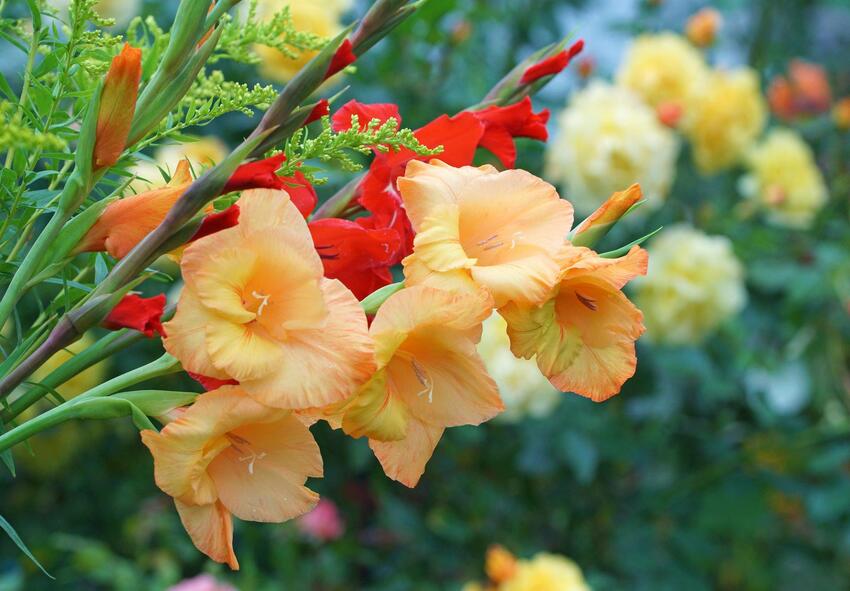
Gladiolus plants are beautiful, but they may not rebloom if not properly cared for after the initial flowering period. Several factors can prevent gladiolus from flowering again, including poor post-bloom care, environmental stress, and overcrowding of the corms. Understanding these factors and following the right care practices will help rejuvenate your gladiolus and encourage a second bloom.
One of the main reasons gladiolus fail to rebloom is that the energy is not properly directed into the corm for storage after flowering. Cutting back spent flowers, providing proper winter storage, and dividing corms every few years can help maintain their vitality and encourage blooming. Additionally, gladiolus thrive in specific growing conditions. If the corms are not given enough sunlight, warmth, or nutrition, it may hinder their ability to flower again.
By following a few simple steps, such as deadheading flowers, preparing corms for winter storage, and periodically dividing them, you can ensure your gladiolus has the best chance of reblooming and producing stunning flowers again next season. This process requires patience, but with the right care, gladiolus will continue to flourish in your garden year after year.
Step-by-Step Guide to Ensuring Reblooming
Encouraging your gladiolus to rebloom involves a few key practices: remove spent flowers to direct energy into the corm, prepare the plants for winter by digging up corms in colder climates, and divide them every 3-4 years to maintain healthy growth and improve the chances of flowering.
Step 1: Deadheading and Post-Bloom Care
Deadheading gladiolus after they finish blooming is crucial for encouraging future flowers. Once the flower spikes begin to fade, remove them by cutting the stem back to just above the first set of leaves. This process ensures that the plant doesn’t waste energy trying to produce seeds and instead directs its energy into strengthening the corm, which will help it bloom again next season.
It’s important to leave the foliage intact even after the flowers have faded. The leaves are responsible for photosynthesis, which helps the plant store energy in the corms for future growth. Let the foliage naturally die back on its own, as cutting it too early may weaken the plant.
By practicing proper deadheading and allowing the leaves to continue their work, gladiolus can build up the necessary reserves for next year’s growth. This practice also prevents disease and pests from taking advantage of spent flowers, ensuring healthier plants overall.
Step 2: Preparing Gladiolus for Winter
Preparing gladiolus for winter is vital, especially in colder climates where frost can damage the corms. After the first frost, you should dig up the corms to prevent them from freezing in the ground. Carefully lift the corms with a spade or fork, being cautious not to damage them.
Once the corms are removed, gently shake off any excess soil and allow them to dry in a shaded, well-ventilated area for a few days. After drying, trim off any remaining roots and store the corms in a cool, dry place, such as a basement or garage. It’s crucial to store them in a place where they will not be exposed to moisture, as damp conditions can cause rot.
Proper winter storage helps preserve the corms and ensures they will be healthy and ready to plant again in the spring. Gladiolus corms that are properly stored will have the energy and vitality to bloom again when the growing season begins.
Step 3: Dividing and Transplanting Gladiolus
To maintain the health and vitality of your gladiolus plants, it’s essential to divide the corms every 3-4 years. Over time, corms can become crowded, leading to poor growth and fewer flowers. Dividing the corms allows each one more space and resources to grow, leading to better blooms.
When dividing gladiolus, carefully dig up the corms and separate the smaller offsets from the main corm. Make sure to keep only firm, healthy corms, as any that are soft, diseased, or damaged will not produce good flowers. Discard any corms that appear unhealthy to prevent the spread of disease.
Once divided, replant the corms immediately in nutrient-rich, well-draining soil. Space them appropriately to ensure they have enough room to grow. Dividing corms not only helps improve the health of the plant but also gives you the opportunity to expand your gladiolus collection or share with friends and family.
Common Problems with Gladiolus and How to Fix Them
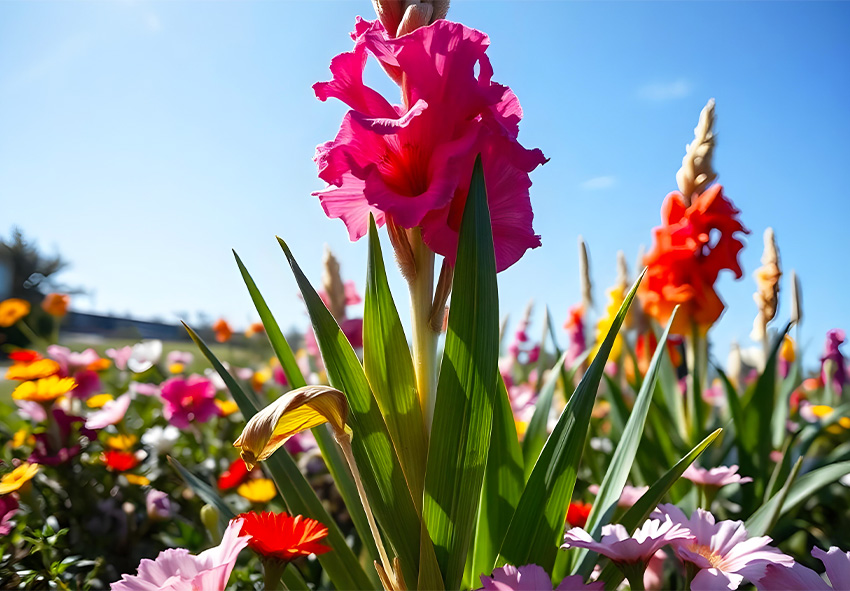
Gladiolus are beautiful and striking flowers, but they can face a few challenges that may affect their growth and bloom. Understanding common problems and how to address them will help ensure your gladiolus plants thrive. These issues can be caused by environmental factors, soil conditions, or care mistakes, but with the right approach, they can be remedied.
By addressing issues such as overcrowding, improper watering, and weak stems early, you can keep your gladiolus plants healthy and encourage strong growth and blooming. Each plant has specific needs, so understanding what might be causing a problem and applying the right solution is key.
Whether it’s ensuring proper sunlight for blooms, providing the right soil conditions for healthy root growth, or supporting tall stems, these simple care adjustments can help you enjoy beautiful gladiolus flowers year after year.
Troubleshooting Guide
There are several common problems with gladiolus, but most can be fixed with proper care and attention. From issues with blooming to yellowing leaves and falling over, identifying the cause of the problem and applying the appropriate solution is essential for healthy growth and abundant flowers.
Issue 1: Gladiolus Not Blooming
Several factors may prevent gladiolus from blooming properly, including overcrowding, poor soil, and insufficient sunlight. Here’s how to address these issues:
Cause:
- Overcrowding: Gladiolus corms planted too closely together can compete for nutrients and space.
- Poor Soil: Nutrient-deficient or compacted soil can hinder growth and flowering.
- Lack of Sunlight: Gladiolus needs full sun to bloom well.
Solution:
- Thin Out the Planting: Space out your gladiolus corms to give them ample room to grow. Dig up the corms and divide them if needed.
- Improve Soil Quality: Amend the soil with compost or a balanced fertilizer to improve drainage and nutrients.
- Ensure Sunlight: Ensure gladiolus receives at least 6 hours of direct sunlight daily. If they’re in a shady spot, move them to a sunnier location.
Issue 2: Yellowing Leaves or Weak Growth
If your gladiolus plants have yellowing leaves or weak growth, overwatering or a nutrient deficiency could be the cause. Here’s how to fix it:
Cause:
- Overwatering: Excess water can cause root rot and lead to yellowing leaves.
- Nutrient Deficiency: Gladiolus may not have enough nutrients to thrive.
Solution:
- Improve Drainage: Add organic matter, such as compost or sand, to the soil to improve drainage. If planted in pots, ensure they have drainage holes.
- Allow Soil to Dry: Water gladiolus deeply but allow the soil to dry out between waterings to avoid waterlogging.
- Fertilize Properly: Use a balanced fertilizer or one with more phosphorus to support healthy root and flower growth. Apply every few weeks during the growing season.
Issue 3: Gladiolus Falling Over
Tall gladiolus varieties may struggle to support their weight and fall over. To prevent this from happening, follow these steps:
Cause:
- Weak Stems: Some gladiolus varieties have weak stems that can’t support the heavy blooms.
- Tall Blooms: Tall gladiolus varieties are more susceptible to toppling over, especially during flowering.
Solution:
- Use Stakes or Plant Supports: Insert stakes into the soil when the plants are young and tie them securely as they grow taller. This will help them stand upright, even with heavy blooms.
- Plant in Clusters: Plant gladiolus in groups or clusters to allow the plants to support each other. This can help them resist wind and prevent them from falling over.
- Space Plants Properly: Space gladiolus plants 6-8 inches apart to ensure good airflow and support.
By taking these simple measures, you can prevent common gladiolus problems and enjoy their stunning blooms season after season.
Propagating Gladiolus: Growing More Beautiful Blooms
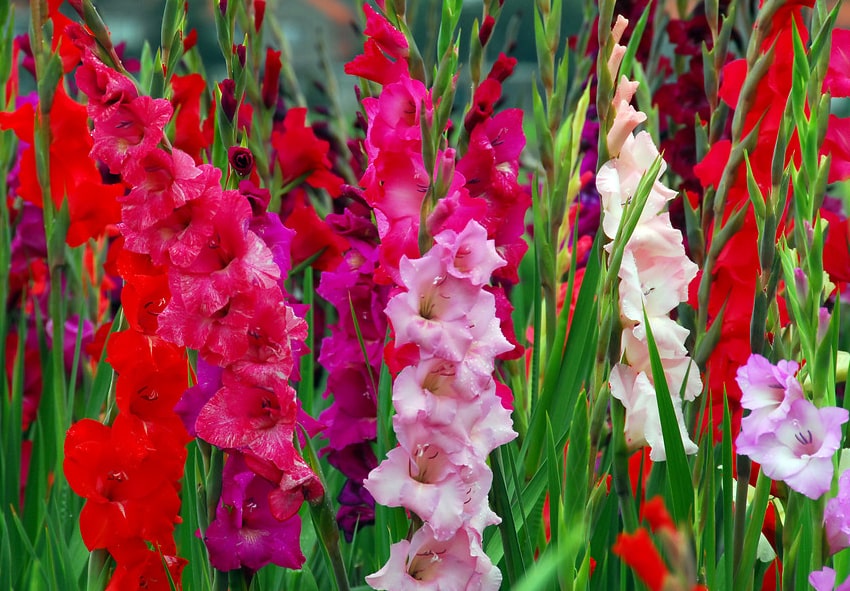
Propagating gladiolus is a great way to expand your garden with these beautiful, tall flowering plants. There are two main methods for multiplying gladiolus: dividing corms and growing from seeds. Both methods can help you enjoy more blooms, but each has its own timeline and level of difficulty.
The most common and effective method is dividing gladiolus corms. Each year, gladiolus corms produce offsets (smaller corms) that can be separated and replanted to create new plants. This method produces plants that will bloom in the next growing season, making it ideal for gardeners who want faster results.
Growing gladiolus from seeds is a slower process but can be rewarding for those who want to experiment with new varieties or create unique hybrids. It requires more patience, as seedlings can take 2-3 years to bloom, but it allows you to enjoy a wider range of flower colors and patterns in the long term.
Whether you choose to divide corms or grow from seeds, both methods can help you expand your gladiolus collection and enjoy these stunning flowers for years to come.
How to Propagate Gladiolus Step-by-Step
Propagating gladiolus is simple and can be done either by dividing corms or growing from seeds. Dividing corms is the faster method, with new plants blooming the following season, while seed propagation takes longer, with blooms expected in 2-3 years. Below are the steps for both methods.
Step 1: Dividing Gladiolus Corms (The Best Method)
The easiest and most popular way to propagate gladiolus is by dividing the corms. After the gladiolus blooms and the foliage dies back in the fall, it’s time to dig up the corms. Gently lift the corms from the soil using a spade or fork, taking care not to damage them.
Once the corms are removed, look for smaller offsets attached to the main corm. These offsets are new corms that can be separated and replanted to grow new gladiolus plants. Ensure that each offset has at least one “eye” (a bud from which the plant will grow).
Separate the healthy offsets from the main corm by gently pulling or cutting them off. Discard any damaged or diseased corms to prevent spreading infection. Plant the separated corms the following season in a sunny location with well-draining soil. By dividing your gladiolus every 2-3 years, you’ll ensure strong, healthy plants with an abundant display of flowers.
Step 2: Growing Gladiolus from Seeds
Growing gladiolus from seeds is a more time-consuming method but can be rewarding, especially for gardeners interested in hybridizing their own varieties. Start by collecting seeds from mature gladiolus seed pods in late fall, after the flowers have fully faded and the pods have dried. Be sure to harvest seeds from healthy, disease-free plants.
To germinate gladiolus seeds, place them in a warm, well-lit area. Gladiolus seeds need consistent warmth and light to sprout, so a sunny windowsill or a grow light can work well. Plant the seeds in a shallow tray with well-draining seed-starting mix, pressing them lightly into the soil without burying them too deep.
Water the seeds gently and keep the soil moist but not soggy. Germination can take a few weeks. Once the seedlings have developed a few leaves, transplant them into larger pots or directly into the garden when they are strong enough. However, be patient—gladiolus grown from seeds may take 2-3 years to bloom, but the flowers will be well worth the wait.
Frequently Asked Questions (FAQs) about Gladiolus
1. When is the best time to plant gladiolus bulbs?
Plant gladiolus corms in spring, after the last frost when the soil has warmed to around 55°F (13°C). For continuous blooms, plant new corms every two weeks until early summer. Choose a sunny spot with well-draining soil, and plant the corms 4–6 inches deep and about 6 inches apart. Staggered planting ensures a steady supply of blooms from midsummer through early fall.
2. Do gladiolus grow well in containers indoors?
Yes, gladiolus can grow in containers indoors, especially dwarf or smaller varieties. Use a deep container (at least 12 inches) with good drainage and rich, loose soil. Place the pot in a bright, sunny location or under grow lights. Keep the soil moist but not soggy. Once blooms fade, move the plant outdoors or let the foliage die back naturally to allow the corms to recharge for next season.
3. Can Gladiolus bulbs be ordered from your online store?
Yes, you can! Our online store Dutch-bulbs.com offers a wide selection of Gladiolus plants, including different varieties and colors. We provide top-quality plants that are carefully cultivated and shipped with care to ensure they reach you in perfect condition. Visit our online store and place your order for a delightful addition to your home or garden.
4. Do gladiolus need to be staked or supported?
Yes, taller varieties of gladiolus often need support to prevent bending or falling over, especially in windy conditions. Use stakes, garden rings, or plant them in clusters so they can support each other. Insert supports when planting to avoid damaging the corms later. Dwarf varieties usually don’t need staking and are better suited for smaller spaces or container growing.
5. Can I leave gladiolus corms in the ground over winter?
It depends on your climate. In USDA zones 8–11, gladiolus corms can stay in the ground year-round. In colder zones (7 and below), they should be dug up in fall after the foliage yellows. Dry the corms for a few days, remove any soil, and store them in a cool, dry, and dark place until spring. This ensures healthy plants and blooms for the following season.
Published: 25.03.2025
